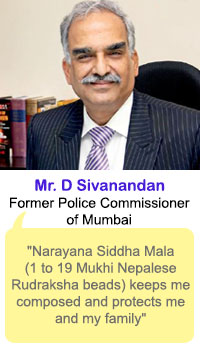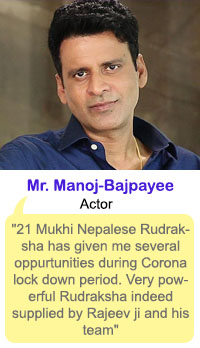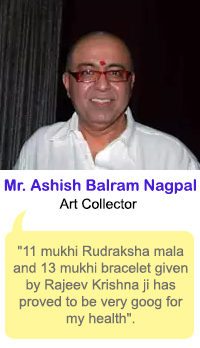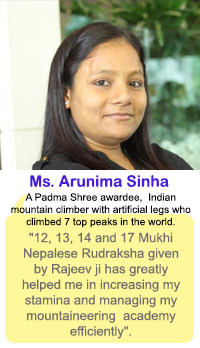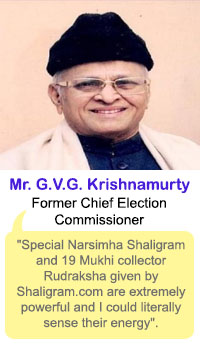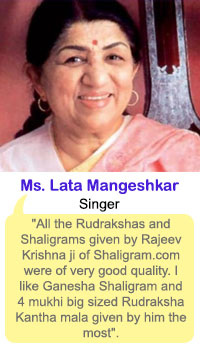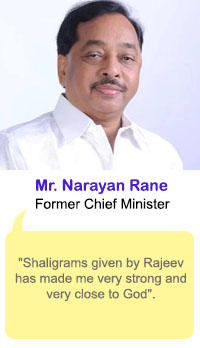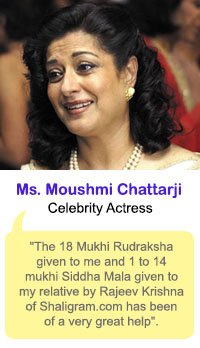The Vasudeva-murti-salagrama is small and round, very much like an areca-nut; there are two chakras evenly located at the entrance of the aperture. However, there are no chakras in the interior. It is rather whitish in colour and brilliant in appearance. When worshipped, it can help avoid untimely death; and it will secure all desires. The Maha-vishnu-murti-salagrama is pleasant in appearance, and the spiral mark in lines is seen on its surface. It shines brilliantly, and is black in colour. It is an auspicious stone and will remove all fear of death. The Narayana-murti-salagrama is blue-black in colour, and has a chakra at the navel, which is also raised. There is long line-marking on its surface and the mark of vanamala in gold.
The Lakshmi-narayana-murti Salagrama is of yellowish hue, and its left side is rounded; there are four chakras surrounded by a long time. There are markings of pestle, sword, bow, vanamala, conch, discus and mace on the face and at the navel. The stone is suitable for all prescribed rituals; it will cause prosperity, and accomplishment of ones desires. The Sridhara-murti-salagrama is recognized by the prominent marking of vanamala; the stone’s colour is very much like the Kadamba flower (Nauclea Cadamba, viz. Orange). Its worship secures all attainments The Samkarshana-murti-salagrama is characterized by two chakras situated in the same spot, and by the front portion being large. The colour of the stone is reddish, and it is beautiful to look at. The Pradyumna-murti-salagrama is of bright yellow colour; there is a minute chakra, and there are numerous apertures in the elongated body of the stone.
The Vishnu-murti-salagrama is bluish in colour, round in shape and has a chakra which is large in size. It may otherwise be blue-black in colour. It is a beautiful salagrama. The Krishna-murti-salagrama is recognized by a long line in the middle, which resembles the mace. The worship of this stone helps one to acquire worldly prosperity and also obtain emancipation. The Kurma-murti-salagrama is raised on the rear side, and is adorned by white hood-like structure and marked by a hoof (foot mark of horse). It has black spots but otherwise clear. The stone is suitable to be worshipped on all auspicious occasions. The Ananta-murti-salagrama is distinguished by the marking of the serpent hood. The banner-like marking is seen in the middle, accompanied by a line. The stone is a large one, shaped like a serpent; and has seven chakras.
Another variety of Ananta-murti has eight or ten chakras, which indicate its superior merit. It may also have thirteen or fourteen chakras, which enhance its value. The stone is yellowish, bluish or variegated in colour. It has markings of discus, conch, mace, lotus and vanamala. The worship of this stone is calculated to secure all prosperity. The Trivikrama-salagrama is shaped like a hen’s egg; it has a chakra on the top-position; there are two other chakras and on one side of the stone is larger on the other. There are markings of flag, conch and ploughshare; there are also spots. Its worship helps avoid untimely death. The Lakshmi-gopala-murti-salagrama is also shaped like a hen’s egg, but has markings and ear-rings. This stone is an extremely rare one; and its worship assures progeny, prosperity and salvation. The Sri-hari-murti-salagrama is a large one and its colour is that of copper (or red). The Balabhadra-murti-salagrama, which is worshipped for obtaining celebrity and cattle wealth is blue-black in colour and its shape is that of a parasol; it is smooth (greasy). It is characterized by animating opening, by a spot and by red lines. Its fore-part is bulky, and its body is soft and shining.
The Gopala-murti-salagrama, which is a very rare one, is worshipped for obtaining progeny, increase of cattle-wealth and emancipation. The Lakshmi-gopala-murti-salagrama is shaped like parasol, and is extremely unctuous: it has no apertures, but spotted. It is large, heavily and brilliant. The Varaha-murti-salagrama is dark in colour (blue-black), has the rear part raised, and is adorned by a golden spot at the back. There are two chakras evenly located; and at the bottom is a minute chakra. The Janardana-murti-salagrama is distinguished by four chakras. The characteristic features of some salagramas representing deities like Sudarsana are given below: The Sudarsana-murti-salagrama has but a single chakra, while the Lakshmi-narayana murti has two chakras, the Achyuta-murti three and the Janardana-murti four. Vasudeva-murti has five chakras, while Samkarshana has six, Varaha-murti seven, Purushottama-murti eight, Narasimha-murti nine, Vamana-murti ten, Pradyumna-murti eleven, and Ananta-murti twelve. The supreme spirit abides in other multi-chakra-stones also.
The especial benefits of worshipping these different varieties of salagramas are narrated as under: The Hiranya-garbha-salagrama brings all good fortune to the worshipper; it is like worshipping a thousand Shiva-nabha salagramas. It assures worldly prosperity. There are, however, some salagramas which are difficult to identify with specific deities. There are many deities in a salagrama as the forms of Vishnu are (viz. Innumerable). It would be impossible to separately identify all the forms of deities in salagrama even in a million years. Now then the forms of the salagramas that must be avoided (viz. Not worshipped) are given: The salagrama-stones which have irregular angles, which are burst, burnt, stained, or warm to touch must be avoided, as also those without chakras, or those which have been embrocated (rubbed and frayed), or which have crooked apertures. Likewise the stones with numerous chakras, crooked chakras and chakras at the bottom, must be avoided. The stones with many arrow-like lines, or with chakras which cannot be deciphered at all; the stones which are shaped like unripe bread-fruit (Artocarpus integrifolia) or like the deep-brown vegetable (Caculus melanoleucus).
The stones which are fettered (clasped or joined) or obstructed, the stones which have a cruel, terrible and awesome aspect, and the stones which have crooked snouts must be avoided. The stones which are broken or burst open, the stones which are burnt, and the stones which are triangular in shape must be avoided, as also those which have internally split, and damaged; and the stones which have many scratches and fissures must also be avoided.
The effects of worshipping the salagramas which are to be avoided, are given below: Worshipping a broken, burnt or warm stone makes one become impoverished; by worshipping joined stones, tangled chakras or a triangular stone, one will witness the death of relatives. By worshipping a stone which has suffered an internal bursting, the worshipper’s relatives or children will die. By the worship of stones with no markings at all, one loses his wealth. By worshipping a stone which has a ferocious aspect, one gets great sorrow, and his family will be destroyed. The salagramas must, therefore, be carefully examined with regard to their worthiness for worship. In the salagramas abide all the fourteen realms, and therefore when one gifts the salagramas to others, God will be pleased.
 Google has chosen Shaligram Shala ( shaligram.com) as the world's first 5 star
Google has chosen Shaligram Shala ( shaligram.com) as the world's first 5 star  rated Rudraksha supplying Company
rated Rudraksha supplying Company 

 Google has chosen Shaligram Shala ( shaligram.com) as the world's first 5 star
Google has chosen Shaligram Shala ( shaligram.com) as the world's first 5 star  rated Rudraksha supplying Company
rated Rudraksha supplying Company 

 Identification of Shaligram
Identification of Shaligram 

